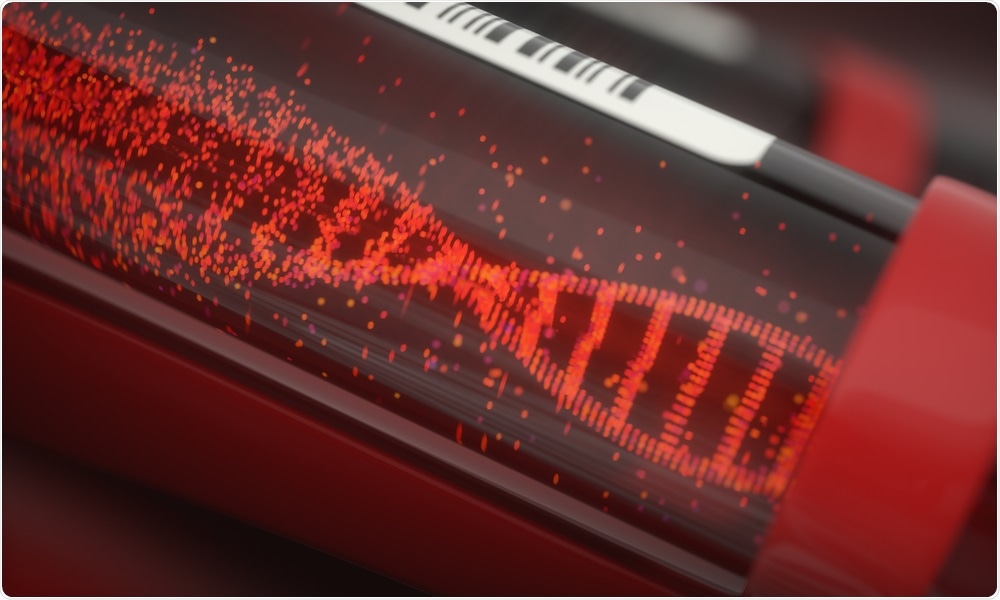Researchers at the Washington University School of Medicine have found that a simple blood test can detect signs of brain damage among people who will develop Alzheimer’s, long before they start to show signs of memory loss or confusion.
 ktsdesign | Shutterstock
ktsdesign | Shutterstock
The test may one day be applied in the neurology clinic to enable rapid and inexpensive detection of the brain damage seen not only in Alzheimer’s disease, but other forms of neurodegenerative disease too.
We validated it in people with Alzheimer's disease because we know their brains undergo lots of neurodegeneration, but this marker isn't specific for Alzheimer's. High levels could be a sign of many different neurological diseases and injuries.
Brian Gordon, Study Author
The test detects levels of neurofilament light chain (NfL), a structural nerve protein that leaks into the cerebrospinal fluid (CSF) and then the bloodstream, once brain neurons become damaged or die.
Increased levels of NfL in the CSF have previously been shown to indicate brain cell damage, but many patients are reluctant to undergo the spinal tap that is required to obtain this fluid.
Gordon and team therefore investigated whether blood levels of NfL could also serve as a marker for neurological damage.
The team assessed more than 400 participants included in the Dominantly Inherited Alzheimer's Network (DIAN), each of whom had rare genetic variants running in their families that typically cause Alzheimer’s to develop in the 30s, 40s, or 50s. All subjects had previously undergone a blood test, brain scan and cognitive testing at a DIAN clinic.
The researchers found that among those who had an early onset genetic variant (n=247), blood NfL levels were higher at baseline and rose over time, compared with relatives who had a healthy form of the gene (n=162).
As reported in the journal Nature Medicine, Gordon and team could detect the difference up to 16 years prior to when cognitive signs would be expected to show.
In addition, brain scan analyses showed that the rate at which NfL levels rose matched the rate at which a brain area called the precuneus (which is involved in memory) thinned and shrank.
Sixteen years before symptoms arise is really quite early in the disease process, but we were able to see differences even then. This could be a good preclinical biomarker to identify those who will go on to develop clinical symptoms."
Stephanie Schultz, Co-author
To test whether blood NfL levels could be predictive of cognitive decline, the team performed brain scans and two cognitive tests (the MiniMental State Exam and the Logical Memory test) on 39 participants with an early-onset gene variant who re-visited the DIAN clinic an average of two years after their last visit.
The team found that the participants who had previously been identified as having rapidly increasing NfL levels were the most likely to display signs of brain atrophy and cognitive decline.
It will be important to confirm our findings in late-onset Alzheimer´s disease and to define the time period over which neurofilament changes have to be assessed for optimal clinical predictability.”
Mathias Jucker, Senior Author
Gordon says that although he can see the test being used in the clinic in a few years’ time to identify signs of brain damage in individual patients, he does not feel it is possible yet to predict exactly when people will develop dementia.
However, “we are all working towards that," he concludes.